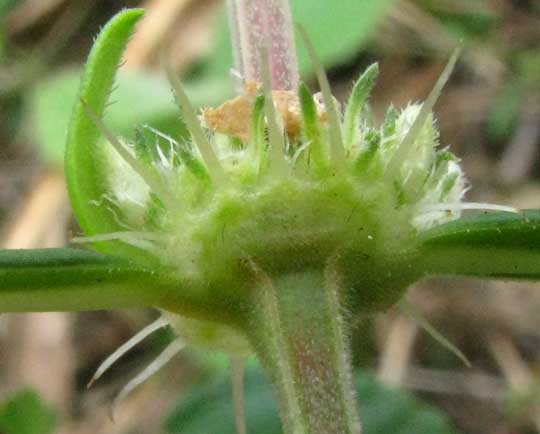Excerpts from Jim Conrad's
Naturalist Newsletter
from the February 26, 2012 Newsletter issued from Hacienda Chichen Resort beside Chichén Itzá Ruins; limestone bedrock; elevation ~39m (~128ft), N20.675°, W88.569°; central Yucatán state, MÉXICO
BUTTONWEED
Common in weedy areas around here is what's seen below:

A dew-drenched flower head with a slender, stigma-tipped style projecting from each four-lobed corolla is shown below:

This is one of several weedy herbs called Buttonweeds. It's SPERMACOCE VERTICILLATA, a member of the Madder or Coffee Family, the Rubiaceae. That's a big family, with maybe 13,000 species in some 650 genera, especially well represented in the tropics. The genus Spermacoce itself contains about 50 species. Weakley's Flora of the Southeastern States lists four Spermacoce species for that region, so this is a good family and genus for wildflower lovers to know.
The Coffee Family is relatively easy to recognize by its combination of opposite leaves (two at each stem node), and prominent stipules connecting the opposite leaf bases. Our Buttonweed's long-toothed stipules, encircling the stem like a king's crown, are seen below:

A few other plant families also feature opposite leaves with stipules connecting their bases, but Coffee Family species display a third important feature that usually separates them from those other families: Coffee Family species produce flowers with inferior ovaries. That means that the calyx, corolla and male sexual parts arise atop the ovary, not below it, as in most plants. A diagram explaining this is at ../inf_sup.gif.
Spermacoce verticillat occurs in weedy situations throughout the New World tropics -- the Neotropics.